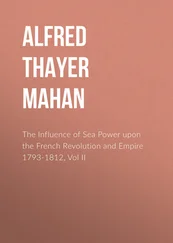Alfred Thayer Mahan - Story of the War in South Africa, 1899-1900
Здесь есть возможность читать онлайн «Alfred Thayer Mahan - Story of the War in South Africa, 1899-1900» — ознакомительный отрывок электронной книги совершенно бесплатно, а после прочтения отрывка купить полную версию. В некоторых случаях можно слушать аудио, скачать через торрент в формате fb2 и присутствует краткое содержание. Жанр: foreign_prose, История, foreign_edu, foreign_antique, на английском языке. Описание произведения, (предисловие) а так же отзывы посетителей доступны на портале библиотеки ЛибКат.
- Название:Story of the War in South Africa, 1899-1900
- Автор:
- Жанр:
- Год:неизвестен
- ISBN:нет данных
- Рейтинг книги:4 / 5. Голосов: 1
-
Избранное:Добавить в избранное
- Отзывы:
-
Ваша оценка:
- 80
- 1
- 2
- 3
- 4
- 5
Story of the War in South Africa, 1899-1900: краткое содержание, описание и аннотация
Предлагаем к чтению аннотацию, описание, краткое содержание или предисловие (зависит от того, что написал сам автор книги «Story of the War in South Africa, 1899-1900»). Если вы не нашли необходимую информацию о книге — напишите в комментариях, мы постараемся отыскать её.
Story of the War in South Africa, 1899-1900 — читать онлайн ознакомительный отрывок
Ниже представлен текст книги, разбитый по страницам. Система сохранения места последней прочитанной страницы, позволяет с удобством читать онлайн бесплатно книгу «Story of the War in South Africa, 1899-1900», без необходимости каждый раз заново искать на чём Вы остановились. Поставьте закладку, и сможете в любой момент перейти на страницу, на которой закончили чтение.
Интервал:
Закладка:
The battle at Elandslaagte was distinctly creditable to both sides, but upon the whole gave sounder cause for self-congratulation to the British than to their opponents. The former were numerically superior to the defenders, but not to an extent which countervailed even the natural advantages of the ground, further improved by measures for which time allowed.
Regarded apart from its connection with the campaign as a whole, simply as a combat unrelated to other incidents, the conception and the execution of the attack were admirable; while in the matter of military dynamic energy, to whatever source that shown on the one side or the other may be attributed, the potentiality of the attacking force was demonstrated to be greater than that of the opponent.
Still more was the action at Elandslaagte commendable, when viewed in relation to the general respective conditions of the Boers and the British in Natal at that time.
Duly to appreciate the merits and the results of these two successive days of fighting, at Talana and at Elandslaagte, it must be remembered that the British in a general sense, and at Dundee locally as well, were upon the defensive, and that the Boer movements were each a part of one general plan directed, and most properly, to overwhelm and destroy the detachments—Dundee and Ladysmith—in detail; they together being rightly considered one fraction of the enemy's whole force, present or hurrying over sea. So regarded, the vigour with which the British took the initiative, assumed the offensive, themselves in turn attacking in detail, and severely punishing, the separate factors of the enemy's combination, is worthy of great praise. Sir Penn Symons is perhaps entitled to the greater meed because to him fell, with the greater burden, the greater opportunity, to which he proved not unequal.
Such men were worthy of the steady forward gallantry shown by officers and men. Both leaders and led easily carry off the palm from the more phlegmatic opponents, who failed to sweep them away. The result was to save Ladysmith, or rather—what was most really important—to save the organized force that was there shut in. The brilliant antecedent campaign, the offensive right and left strokes, the prompt and timely resolve of Yule to retreat just as he did, and the consequent concentration, utterly frustrated the Boers' combinations, and shattered antecedently their expectations of subduing the British by the cheaper method of exhaustion. The failure was not only signal, but in the end discreditable; for while success is no sure proof of merit, nor its opposite of indesert, the wide miscalculation of the ultimate result, which kept the Boers so long inactive before Ladysmith, and saved Natal, while reinforcements were well known all the while to be hasting across the sea, is entitled to scant respect from any indications in its favour. The faulty execution of the original plan, which enabled the enemy to concentrate and to accumulate adequate means of resistance, and the subsequent underestimate of the endurance of the garrison, bear the same mark. In issuing their ultimatum, in opening the campaign, in combining against Dundee, and finally in investing Ladysmith, the Boers exceeded decisively that five minutes of delay upon which, to use Nelson's words, turns victory or defeat; and the loss of time, as yet only serious, through the procrastinations of the siege became irremediable.
It is noticeable that the returns of casualties at Elandslaagte do not perfectly bear out extreme conclusions as to the fatal preponderance of the defence over the offence in modern warfare. As reported soon after the action, the British lost in killed, 55; in wounded, 199. Of the Boers, 65 dead were found on the ground; others, estimated—guessed is perhaps more correct—at 50, were killed in pursuit by the cavalry. Their wounded is not stated, but there were many among the three hundred prisoners taken. It is true, certainly, that in this affair not only was the British attack well combined, but their superiority in numbers was considerable. Still, after all deductions, the greater loss of the defendants casts doubt, either upon their marksmanship or upon the prevalent theory that the effects of modern weapons are revolutionary. As a historical fact, a front attack upon intrenched men, even irregulars, has been a desperate business as far back, at least, as Bunker Hill and Fort Moultrie.
Twenty-four hours after Elandslaagte, at 9 P.M., Sunday, October 22, Yule's men started on their march of sixty miles, of mountain climb and over rain-drenched roads, to Ladysmith. Their own work at Talana Hill had secured the left flank of their retreat, by the demoralization of Meyer's force; to protect their right, the increasing numbers and threatening movements of the enemy west of the railroad impelled Sir George White to further action. On the 24th he moved out a strong force, which discovered the enemy at Rietfontein, seven miles from Ladysmith, on a ridge west of, and parallel to, the Glencoe road; their artillery intrenched in the centre, and supported by infantry upon commanding elevations at either end. The British drew up on a parallel ridge, to the eastward, and an action ensued, confined mainly to artillery at 3,000 yards. In the end the Boers, chiefly a body of Free State men, evacuated their positions about 2 P.M. and retired to the westward. Pursuit was not attempted. The security and junction of Yule's detachment was the prime immediate necessity, and it was by this fully apparent that the time was come when offensive returns, on the part of the greatly outnumbered British, must be limited to those needed to insure necessary delay before final inevitable interception and investment. It was no occasion for displays of military fancy sparring.
Shortly after noon of Thursday, October 26, Yule's column marched into Ladysmith—"done up," telegraphed White, "but in good spirits and only need rest." The lamented Steevens, with his graphic pen, has described for us the pride, pomp and circumstance of the return of the men who had stormed Talana Hill, and had still before them the grim protracted realities of Ladysmith.
"Before next morning was gray in came the 1st Rifles. They plashed uphill to their blue-roofed huts on the south-west side of the town. By the time the sun was up they were fed by their sister battalion, the 2nd, and had begun to unwind their putties. But what a sight! Their putties were not soaked and not caked; say, rather, that there may have been a core of puttie inside, but that the men's legs were imbedded in a serpentine cast of clay. As for their boots, you could only infer them from the huge balls of stratified mud they bore round their feet. Red mud, yellow mud, black mud, brown mud—they lifted their feet toilsomely; they were land plummets that had sucked up specimens of all the heavy, sticky soils for fifteen miles. Officers and men alike bristled stiff with a week's beard. Rents in their khaki showed white skin; from their grimed hands and heads you might have judged them half red men, half soot-black. Eyelids hung fat and heavy over hollow cheeks and pointed cheekbones. Only the eye remained—the sky-blue, steel-keen, hard, clear, unconquerable English eye—to tell that thirty-two miles without rest, four days without a square meal, six nights—for many—without a stretch of sleep, still found them soldiers at the end.
"That was the beginning of them; but they were not all in till the middle of the afternoon—which made thirty-six hours on their legs. The Irish Fusiliers tramped in at lunch-time—going a bit short some of them, nearly all a trifle stiff on the feet—but solid, square and sturdy from the knees upward. They straightened up to the cheers that met them, and stepped out on scorching feet as if they were ready to go into action again on the instant. After them came the guns—not the sleek creatures of Laffan's Plain, rough with earth and spinning mud from their wheels, but war-worn and fresh from slaughter; you might imagine their damp muzzles were dripping blood. You could count the horses' ribs; they looked as if you could break them in half before the quarters. But they, too, knew they were being cheered; they threw their ears up and flung all the weight left them into the traces.
Читать дальшеИнтервал:
Закладка:
Похожие книги на «Story of the War in South Africa, 1899-1900»
Представляем Вашему вниманию похожие книги на «Story of the War in South Africa, 1899-1900» списком для выбора. Мы отобрали схожую по названию и смыслу литературу в надежде предоставить читателям больше вариантов отыскать новые, интересные, ещё непрочитанные произведения.
Обсуждение, отзывы о книге «Story of the War in South Africa, 1899-1900» и просто собственные мнения читателей. Оставьте ваши комментарии, напишите, что Вы думаете о произведении, его смысле или главных героях. Укажите что конкретно понравилось, а что нет, и почему Вы так считаете.












